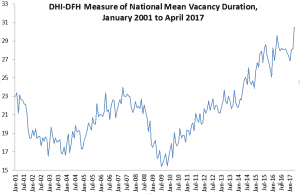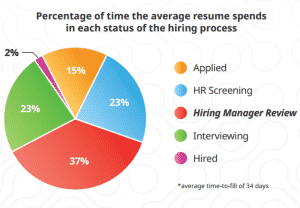The time to fill metric represents those crucial days between job opening and closure. Time to fill has recently become a sort of buzzword, especially among recruiters who recognize the necessity of maintaining a short time to fill. Generally, recruiters have been the ones advocating for a decreased time to fill – a 2016 study by MRINetwork found that 56% of recruiters cited lengthy hiring practices as the single most important factor keeping employers from adding to their headcounts, apart from the company’s revenue. The story’s the same for the job seekers, with 60% reporting that they would quit a typical search due to the length or complexity of the application. With the recruiters and job seekers on the same page, you’d expect employers to similarly advocate for a shortened application process – not so. A recent CareerBuilder/Harris Poll survey found that 53% of employers see a lengthy application as a good thing.

For better or worse, time to fill has been steadily increasing since the Great Recession in 2009, with the average time to fill across all U.S. industries hitting an all-time high of 30.5 working days in April of 2017 – that’s nearly a full day longer than the previous peak in April of 2016. Another CareerBuilder survey also found a 4% annual increase in hiring managers and HR professionals who plan to increase temporary and contract hiring. Simply put, job availability is on the rise while companies are falling further behind in their ability to promptly fill those openings.

To learn more about how to secure the right talent without sacrificing time, check out Talencio’s blog: Finding the One.
About Talencio: We help the Health Technology community make progress by putting the right people in the right place to solve problems and identify opportunities to move humanity forward. To learn more about opportunities in the health technology field, or to hear how other companies have partnered with Talencio to tap into our skilled professional talent pool, contact us at 612.703.4236 or email. Talencio has been the preferred provider of vetted, accomplished professionals to the Health Technology Community for over 9 years.
Written by: Jonah Mische, Talencio intern and student at Davidson College, Davidson, North Carolina.
Sources:
CareerBuilder/Harris Poll Survey
CareerBuilder Survey
DHI Hiring Indicators
Finding the One
iCIMS Hiring Insights
iCIMS Whitepaper
MRINetwork Sentiment Study